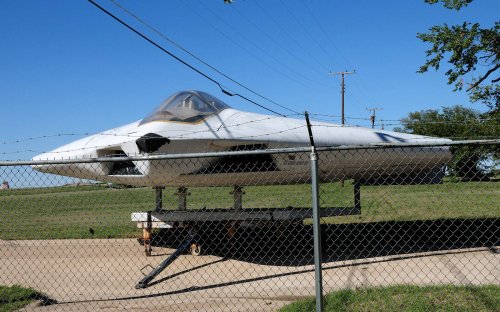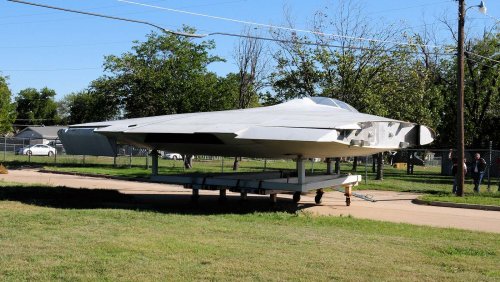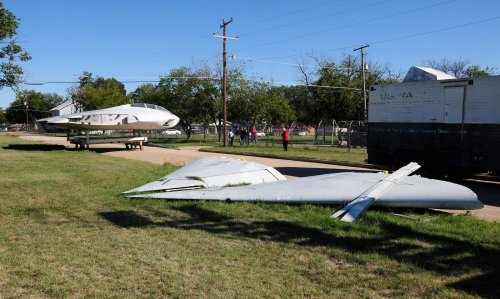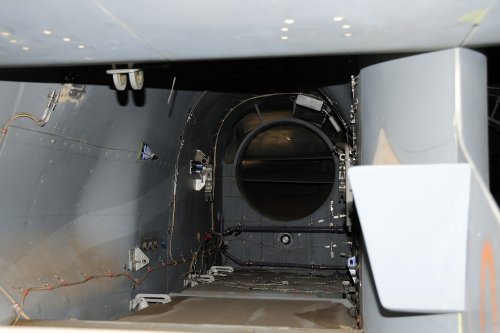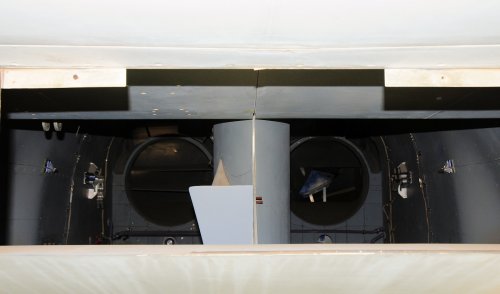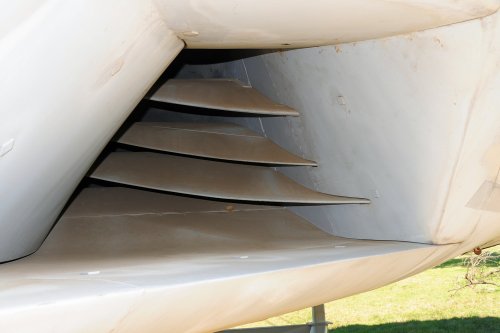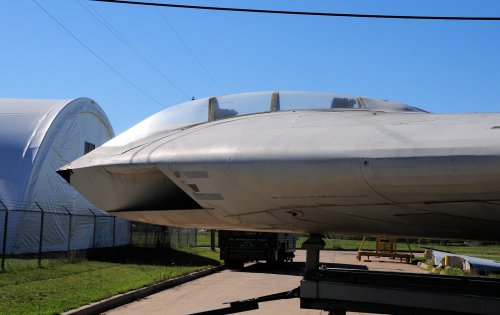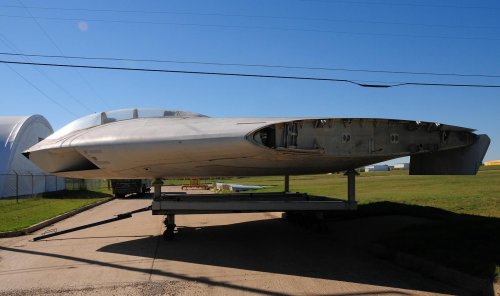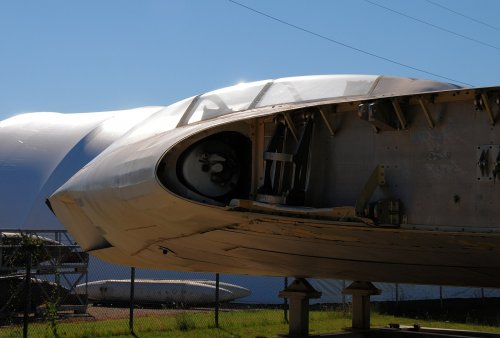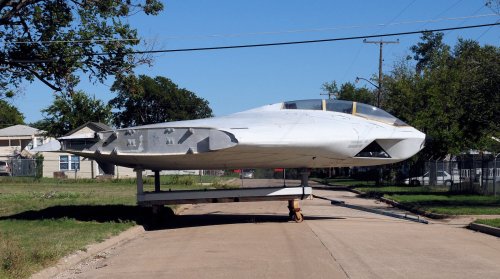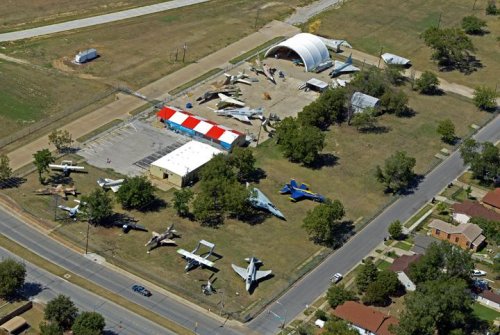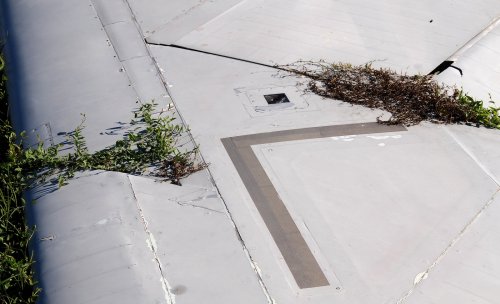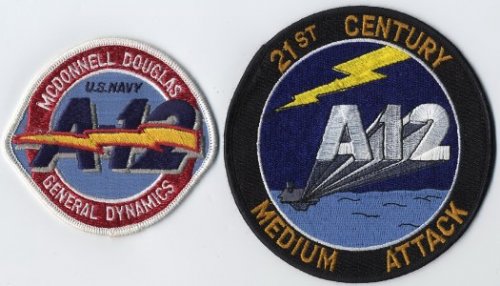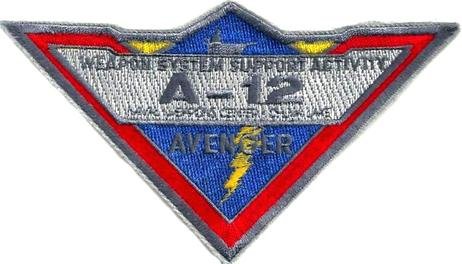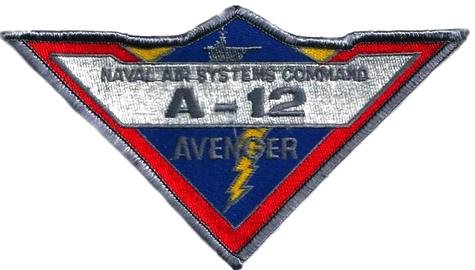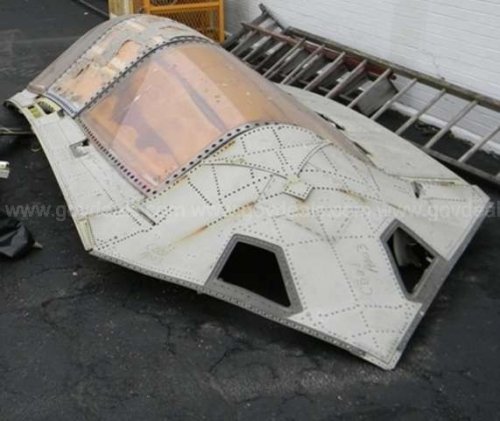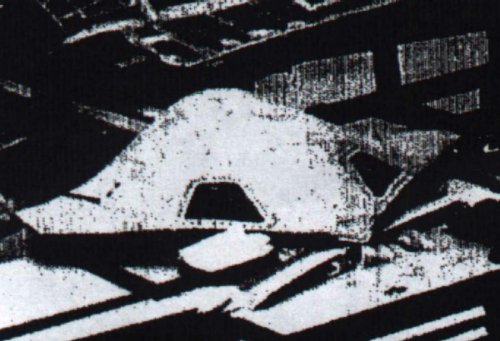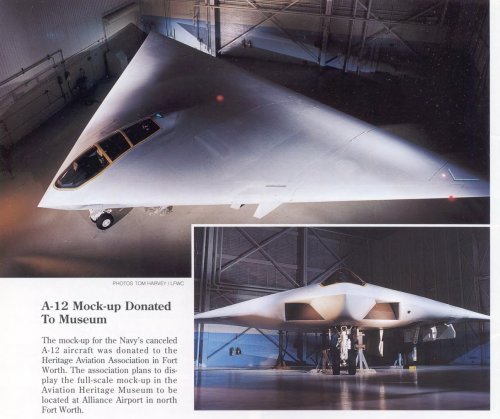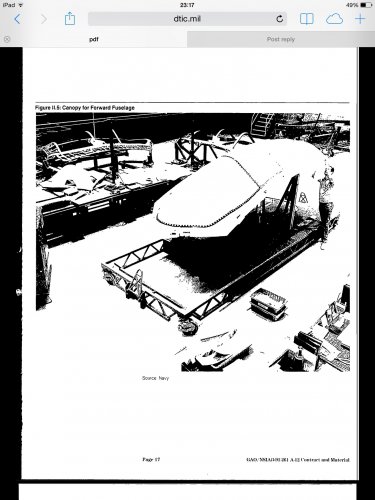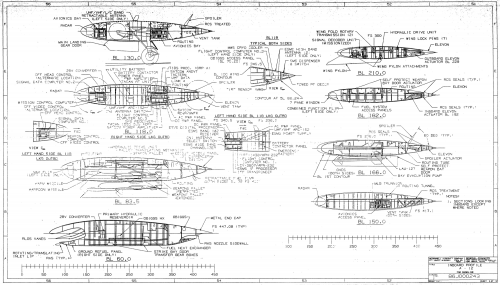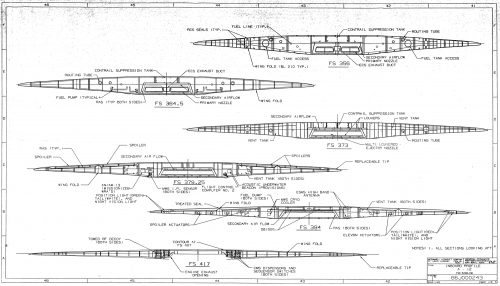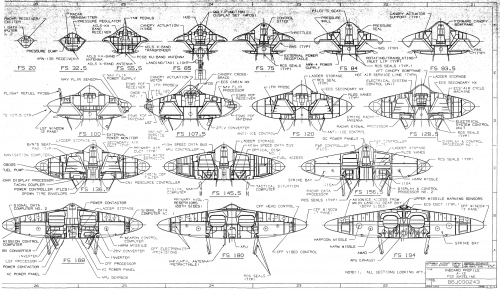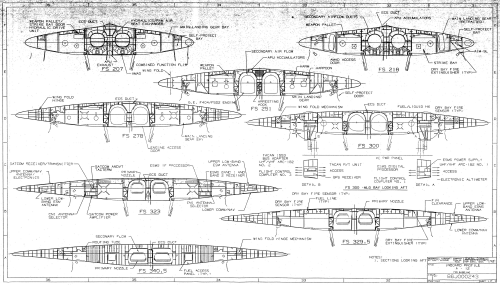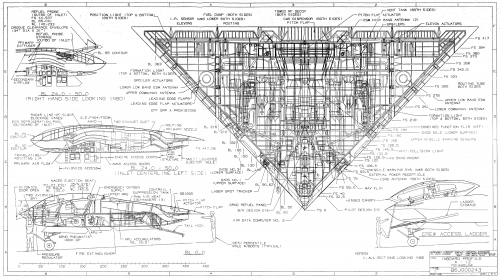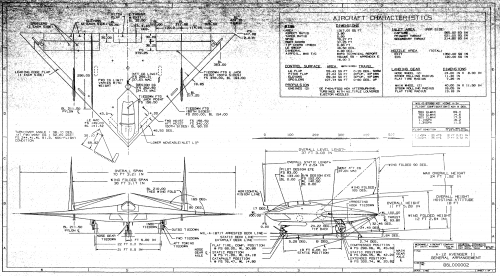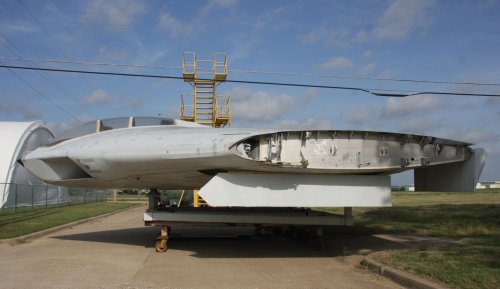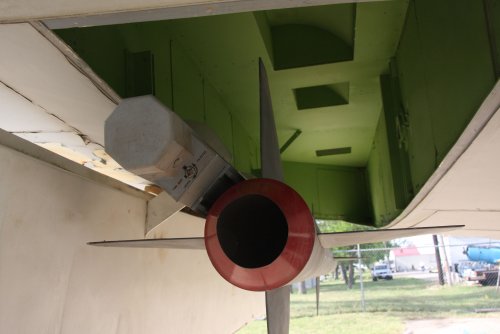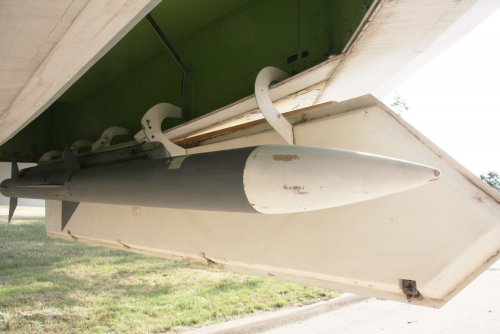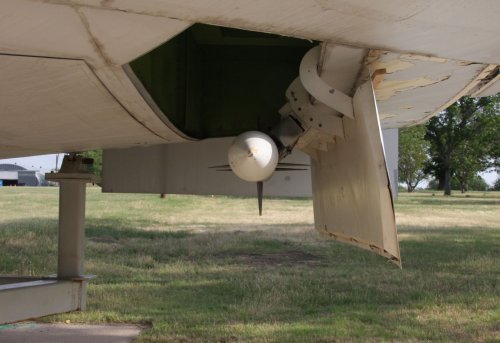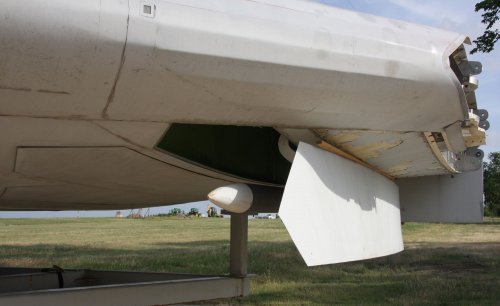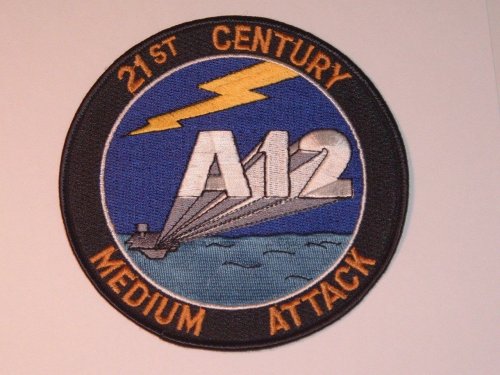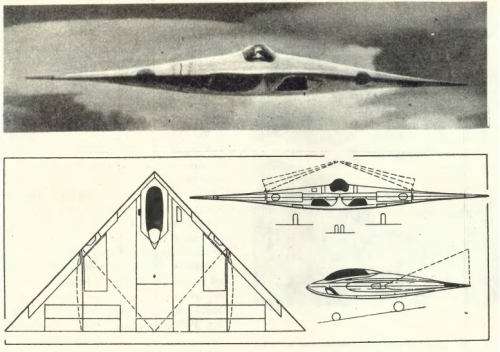Quote from: quellish on July 15, 2014, 12:05:26 am
Every US low observable aircraft since then has also made mission planning and presenting the best possible aspect to threats a primary means of survivability.
The DMS detects pop up threats and allows the crew and aircraft to present the best possible aspect to the threat. This can mean altering course using the autorouter, altering flight controls to minimize scattering sources, etc. Most persisting VLO platforms (and one not so VLO) have a similar capability.
And how long does it take for the S-300V to displace and move within one of the sanctuary bastions where it might be protecting roadmobile Topol? Fifteen minutes? Five?
WHO is providing the EOB mapping of these deep target areas in the middle of a nuclear war?
Oh, so the B-2 is _not_ primarily a strategic mobile ICBM sniper is it? Then the problems get worse because the threat densities become larger and the abiltiy to drop GBU-31/38 from the same height you would a B83 is minimal. Which means that even less than stellar kinematic threats like the SA-6 are now real problems because the B-2 cannot do a 7G split ess at 1,100 knots like an F-22 to spoil the shot.
And if you fly right over the site and something a long ways off snaps on to look at you on a blink schedule, all's he has to do is use his secure microwave comms to that SA-17/21 etc. and again:
You. Are. Dead.
You are saying (I believe) some active counter radar emitter exists and is in use operationally on the B-2. I would certainly like to know where the antennas for this emitter are, where it gets it's power from, and how this system is maintained and tested for readiness.
I would like to know why small plastic ribbons around the F-22/35 provide the same degree of protection as the fully planform aligned YF-23. I would like to know HOW these narrowXshallow little bands, often buried in the control surfaces, are labeled 'deep channel RAM'. I would also like to know WHY, if late F-22 and all F-35 RAM is 'baked right in' there is such a marked difference in _smooth skin panels_ between non-LO treated early EMD F-35 prototypes and full LO treated LRIP models with thick RAM panels sufficient to change the contours of the jet's outline.
The B-2 has similar features in the surrounding frisbee curl on the wing LE.
It also has a deep enough body to support a secondary system, built into/under the skin.
It doesn't have to absorb it. It has to prevent the energy from being sent back to the emitter.
It also does not have to be deep if it has a large attenuation constant.
At lower wavelengths, including L-Band, composites, even those which are RAM laminate stacks, are naturally dielectric-
>>
The Russian approach has been to invest in the further development of low band radars, especially operating in the VHF band. With wavelengths of the order of a metre or more, only very large stealth aircraft (e.g. B-2A) satisfy the physics requirement for geometrical optics regime scattering. A fighter sized aircraft such as the JSF will see most of its carefully designed shaping features fall into the resonance or Raleigh scattering regions, where shaping is of little or no import, and skin depth penetration of the induced electrical surface currents defeats most absorbent coatings or laminates.
>>
http://www.ausairpower.net/APA-Rus-Low-Band-Radars.html
>>
Another less frequently discussed consideration is that L-band frequencies typically sit below the design operating frequencies of stealth shaping features in many fighter aircraft and UAV designs. Shaping features such as engine inlet edges, exhaust nozzles, and other details become ineffective at controlled scattering once their size is comparable to that of the impinging radar waves. This problem is exacerbated by the skin effect in resistive and magnetic materials, which at these wavelengths often results in penetration depths incompatible with thin coatings or shallow structures.
It was therefore not surprising that during the 2000/2001 Australian media debate over the Wedgetail AEW&C aircraft, US participants were quick to vocally argue the “counter-stealth” capability of the Wedgetail's L-band AESA radar design.
Recently performed Radar Cross Section modelling and simulations performed on key shaping features of the F-35 Joint Strike Fighter show a pronounced degradation of shaping effects below the design's optimal X-band operation.
>>
http://www.ausairpower.net/APA-2009-06.html
If there was no need for more than a surface constant loading value-
(Hitler's Stealth Fighter, Time Index 26:40)
https://www.youtube.com/watch?v=MqgfjXaJxV8
You would not see these NOT building a stealth fighter, certainly not like the Horten brother's did, with it's layered carbon and bonded plywood design. Germany had no advanced composites for the engine shrouds nor does it speak well to build a steel cockpit tubular frame out of plastic rather than steel. But most importantly, the jet is being coated with a paint that treats all these mistake zones as an integrated body of METALLICIZED return and thus prevents the radar from intruding into the dielectric RAM stack for attenuation purposes. It instead forms a unified surface loaded skin, like a mirror.
I believe that, in fact, a similar approach is taken on the F-22 and F-35 and that whatever is not scattered on neutral bearings is deliberately dealt with as a surface wave by active cancellation.
The F-22 and F-35 are complex shapes. The F-117 (and X-47, and X-45) is simpler.
I do not see how you are drawing the conclusion that a more complex shape means that shaping is not the most significant contributer to RCS reduction.
Which is your way of sawing that the surface junctions whose angular intersections cannot be stealthy 'don't count' because the inverse correlate is that if the shape doesn't work and the design is still stealthy then _either_ there is a massive fraud going on. OR stealth includes measures of which you are either not aware or are aware of and are deliberately dissembling to cover for.
I really don't care which it is, the proof is that jets which cannot survive a modern, _integrated_ air defense system because they lack the performance to do so, cannot be depending on shape considerations alone to protect them when they are NOT invisible to long wave lengths and CANNOT use mission planning to route-around multiple emitter threats whose location is apt to random change during the interval between stepping to the jet and possible overflight of a displaced battery system.
Either you will fly over a gap which isn't. Or you will get caught turning to avoid one threat and catching a bad aspect from another.
And then: You. Are. Dead.
And yet, this is exactly what the B-2 is supposed to do, with the nominal excuse that half the Soviet IADS would be shattered by previous SIOP ICBM/SLBM/Cruise hits. And the A-12 was supposed to match in the tactical realm where the threat density is even higher.
These being shape optimized flying wings with narrow bow ties lines off each tip and the F-117 and A/FX following the alternative path of darth shaped (supersonic potential) equivalents, the reality then must be asked: WHY (if shape is everythign) are two cruciform shaped, low sweep angle, F-22 and F-35 jets considered 'stealthy' at all?
And there's the bodyguard, looking you right in the face, caught in the headlamp of truth: stealth is not what they say it is.
Again, PTD is an application of Maxwell's equations. There are no lies there. No one is changing physical laws.
Your prevaricative tongue or my lying eyes? :-]
Physical, or electrical gaps? It is the electrical discontinuities that matter, as pointed out in my previous post.
You said 'air gaps' I believe. Look at an oblique angle which catches RAM surrounds on things like the lateral avionics bays or the large 'step' around the DVI with it's enormous glossy dielectric plastic shield.
These are surface discontinuities which, by whatever EE law you care to quote, should be disrupting the surface flows of EM current across the body of the jet. Why are they there on a jet whose composite tolerances are much finer than even the F-22? Why are they there if RAM is 'baked right in' (a sure and certain recipe for disaster in the face of things like Gallium Nitride emitters whose power and operating bands are likely to shift constantly, making a fixed RCS control scheme worthless if it is, essentially, structural in nature).
Um, what? All materials have dielectric properties. This is a measure of how electrically permissive a material is and is expressed in comparison to the permissivity of a vacuum. Metals are good conductors. Other things, not so much. All RAM is engineered to have dielectic properties that are favorable for whatever application the RAM is intended for. This was the case even for "WWII U-Boat periscope stuff".
Thanks to the commercial telecomms revolution (I-Phones and the like), we can now buy phase shifters at ridiculously cheap prices whose tailored MMIC/VLSI features and operating characteristic are both individually tailored and highly efficient. It is these which drive modern AESAs.
There is no reason to assume that stealth cannot make use of these too, _if_ it knows, pulse to pulse, what the incoming target wavelength is and can be energized to match with a surface charge that is of an exactly polar opposed level.
What you seem to be attempting to express is the idea of the outer surface of an object having a dielectic constant much closer to free space than would be the case for metal, and putting an absorber behind that outer surface. This would be an outer surface "transparent" to radar. The Windecker Eagle was constructed of plastic and fiberglass, which are materials used for radomes for the same reasons. Of course, if you make the outer surface of an aircraft "transparent" to radar, all of those unavoidable shiny metal bits under the skin are still reflecting. This was nothing new, and the experiments with the Windecker Eagle did not advance the state of the art in RCS reduction or absorbers. Nor were they particularly successful in achieving a very low signature.
The Windecker Experiments shows the direct that stealth designers were thinkign _before_ Ufimtsyev. Dielectrics, not surface coatings. Skin penetration happens anyway and is one of the big reasons why fighter LO should be impractical on anything not a flying wing.
Then everything related to LO went black, and the Russian Angle became the cover story.
Fixing this issue is one of the principle reasons why stealth brings such a huge weight and performance hit (the other being closed loop cooling) in 'linoleum' covered jets like the F-117.
Because you are literally building up the functional RAM applique on the outside of an aluminum airframe.
Now imagine you are dealing with something that is both composite skinned to the extent that you build the exoskeleton and fit the metallic airframe to the inside. And that has to be 9G @ 700knots+ capable.
You cannot afford a huge weight deficit, you cannot accept a large structural impingement, because strength of the airframe will suffer, as will wingloading and T/Wr.
Oh, 'and by the way', the skin is naturally dielectric so if there is nothing buried in it or beneath it, the metallic components will be seen anyway. While the nature of this radar-proof lining is both band and powerloading sensitive such that you cannot guarantee that what works today will continue to be effective in 10 years. What you CAN say is that adjusting the VLO scheme via replacement of 'baked right in' absorbers is not as cheap as adjusting a software driven cancellation system that works on the principle of active phase shifters whose performance is a known and will remain viable so long as the emitter characterization system can keep up with the wavefore codings on things like LPI and UWB.
Hence the huge and continuing investments on the ASQ-239.
The idea of putting a lossy absorber inside an outer surface or structure that was "transparent" was not new. It had been used successfully and operationally on the A-12 (OXCART).
The idea of making this absorber have active, broadband, charge states that capture the signal crush the life out of it, in the skin or along it's surface is most asuredly more than Oxcart or Senior Crown did.
> We interviewed them and found their level of stealth was, on a rating of [1 to] 10, where 10 is best, at about a level of 2.
> ...
> There were two finalists, but before the final decision [was made] we took their model to the Skunk Works, rebuilt it, tested it at RATSCAT, and raised them from a factor of 2 to a factor of 9. And they had a good design, believe me it was a good design. But it was not stealthy...
Doesn't change the spirit of what I said a bit. If the Skunk Works made the RCS model (for indeed it would have to be so if it was tested at RATSCAT) go from a 2 to a 9, it was most certainly stealthy, even if we are talking orders of magnitude incrementation between steps.
And so again: Who is defrauding the government? Lockheed or the USAF? Who is committing treason? I want to know because, for five billion dollars and the security of the U.S. at stake, they should still be eligible for life before a firing squad.
Unless. There was no massive fraud. And the A-12 was indeed progressing exactly as planned. The Skunkworks was fired because they couldn't make weight or cost on the nozzles. Not because they failed with the external signature characterization testing.
It's important to note that this should not be taken verbatim: Lockheed did not take a model back to the Skunk Works, and it was not a full scale model. The model work was performed at RATSCAT (significantly, using the older pole and rotator).
Been to RATSCAT have you? Tell me more so that I can place you.
As a result of this consulting work Lockheed was given a portion of the construction work on the A-12, specifically the trailing edges and exhaust. But it was not long before that contract was cancelled, and the product of Lockheed's *design* work was discarded. Lockheed's stealth changes did not actually make it into the A-12.
No. Rich would have had to have known how bad the jet was when he called up Elberfeld and told him he was underprice by at least 60% (forgive, I have lost all my resources, and am going by memory here). You can't make cuff calls like that without a working knowledge of what would be needed to fix the problem.
Nor is it definite that Lockheed was off the program. As I recall, Rich told the GD president that if he wanted the work done again, it would cost him four million for the reach-back because the engineering drawings had all been trashed due to security constraints. He _did not_ say that this data had not been recovered.
What is known however is that serious RCS redesign and improvement was undertaken as that 'mere analyst' states in his interview with the Two Star AF Big Wig. "These people don't grant audiences to the peons unless they want to 'convey an idea' which was specifically that the A-12 signature problem was _just fine_, a matter of differing perspectives between USAF and USN modeling techniques."
And how did the period USAF system differ from the USN pole model equivalent?
It's digital, based on finite elements computer modeling.
Now here, Stevenson made himself a mistake. Because he assumed that the USN version was the 'real deal' because it used real world measurements. But that's not the case. Because, even though it's based on a physical vs. virtual measurement system an RCS pole model can never match the NUMBER OR INCIDENT ANGLE variations that a computer model can.
And that's critical when you are flying a high altitude mission, being hit from several aspects with multiple bands of radar emission, all of which tickle the RAM differently, some of which (so called 'omicron' emissions) are specifically phase polarized designed to foil the absorber mechanics.
The USAF modeling system was more sophisticated even though it as 'just' computer based because it did not attempt to use physical models to representatively model a high density, sophisticated (blink on, blink off), sectored, emitter environment.
And what was the result of this? One paragraph in Stevenson's book. A 'Stealth Bra'. Which, if you look at subsequent models and tie pins of the A/FX (the flying wing version) visible on this very forum in fact totally alters the front end of the jet to more of a cranked arrow appearance.
That is how much the A-12 would have changed, had it been fixed through FSD.
Lockheed was not permitted to discuss the products of other programs with GD or the Navy. So no, they did not mention that the "VLO" threshold was much lower than the A-12 would ever be able to achieve. They did provide more general input on reducing the RCS through both shaping and materials. This included suggesting significant shape changes to the inlets, wing thickness, and trailing edges.
Now we get into the nitty gritty of the legal case, whereby there were TWO men from each company cleared into the F-117 and B-2 programs -at some level- of compartment access. We also have the Cold Pigeon and Sneaky Pete designs which the lead engineer (again, it's in the _The Five Billion Dollar Misunderstanding_) at GD says never flew. But which the government insists represents his 'special knowledge' of VLO which obviates their having to prove that they needed to give him squat.
The implication being that this was national security essential stuff which was exchanged between the various companies _before_ the A-12 (and possibly before the F-117) so that each and all could compete. Which would also go a long ways towards explaining why the team of GD and MD were allowed to work together to begin with.
My own contention is that the recent SCOTUS ruling that the USG cannot use a national security restriction to refrain from providing proof that the GDMD was in fact given the technology base access which would have let them complete the A-12 FSD on time, with prototypes. It wasn't that the government backed out on a VLO promise. It wasn't that the USAF didn't want to share it's TDP on the B-2. It's that _the nature_ of that B-2 technical data package was so extremely sensitive that it could not be admitted into any record of law.
Stevenson got himself one end of a very long snake tail. But he didn't pull near long or hard enough to get more than the teasing fragments that the case shows and even that is only revealed in that one quote, in the addendum, at the back.
What he did get was a crucial admission, by the USN, that VLO -as they knew it- did not work at altitude. You can see the nature of this in the design of the A-12 without tails and with very large inlet bypass ducts above the main engine installational envelope, feeding that giant ejector plenum where it is exhaust mixed through the serpentine before exhausting.
This is the kind of trickery that you resort to when you _know_ that you have an overweight (stealth + carrier) design that has no SEP to get to altitude (shades of the F-105) with a useful warload and have to work both the threat radar and his lower hemisphere (MiG-23, MiG-31) IRST systems as a result.
What Stevenson did not have the brains to ask was: "How did you go from an overweight, thin winged, short ranging, no-VLO knowledge, airframe to a thick wing, long radius, and 'solved RCS problem' design with improved SEROC and cruise speeds if LO is such a massive driver on program expenses and ultimately a serious part of the weight issue (or the Stealth Bra would not have played such a large role in the two companies defense against the weight analyst's generalizations about being over the limit on takeoff).
Again, this can only be true if someone, somewhere, likely to preserve their own pet program (F-22, C-17, whatever) coughed on some very significant weight tradeable stealth technologies that took the A-12 from the Gen-1 era of the F-117's linoleum towards the 'best there was at the time' which would have been the B-2.
The B-2 for which the 'cancelled' ZSR-62 is known to have been a major element of an active loading/cancellation scheme.
Denys Overholser's "Shape, shape, shape and materials" is only restating the prinicples governing how fields intertact with a physical object in free space. There is no lie here, only math.
Your problem is that you are hiding behind detail rules and ignoring the main one which is that the data doesn't match the theory. This contradiction principle is a key element of logic as scientific reason and the F-22/F-35 are not what they seem if the shape-shape-shape-materials rule is true.
The A-12 (Avenger II) apparently did not receive any significant input from the B-2 program. I do believe there was a lawsuit about that.
See Above.
What do you mean by "Stealth is active"? That there are components on VLO aircraft that contribute to signature reduction, such as "active" gap sealing that requires power? Or are you asserting that "active cancellation" using emitters on the VLO aircraft are operational, were pioneered by either the A-12 (Avenger II) or B-2, and contribute more than shape to the RCS reduction of the aircraft?
Dunno. I'm not a radio frequency electrical engineer. I simply do not trust people to ever tell me the truth and so I look at things from a skewed perspective that assigns weighting values to contradiction based on historical data I have read from other system commentaries.
Again, if you ARE an EE doctoral (the level at which they start to explain how it really all works), you should admit it and name the field under which you participate so that we can all understand your potential bias when you explain how what I have said is not possible from within the established rules of EM theory as you know it.
As you may have guessed, I believe in physics. I have no idea what you mean by "the bodyguard". The physical laws that govern how fields interact with physical objects in free space *is* the whole of what VLO is about. That is difficult to argue with.
I'm stunned sir. Winning Winston's famous quote about the truth needing a bodyguard of lies for it's own protection as Britain's and yet a presumably British subject not knowing it? What is the national school system coming to?
Shocked I say. :-]
What better way to send the Russians and Chinese down a merry path for 30 years than to let them in on a secret which is incomplete or subtlely warped? Why not assume that among a scientific principle's selection criterion is the certainty of knowledge as to not only it's direct countermeasure but several generations of exploitable measure/counter down the road so that you can plan beforehand how to stay 2 steps ahead?
CONCLUSION:
Stealth is not what it seems. It is admitted but the existence is not the method and the method stated, when pressed for details, is a lie. War is Deceit but what people don't get is that we are always at war. Is that a good thing? When you don't know why the lie is being used, you can only assume that the person stating it is a liar. That condition breeds poisonous separations of trust, even when the underlying protected truth is in fact beneficial.
That's all I got. Last word is yours.

